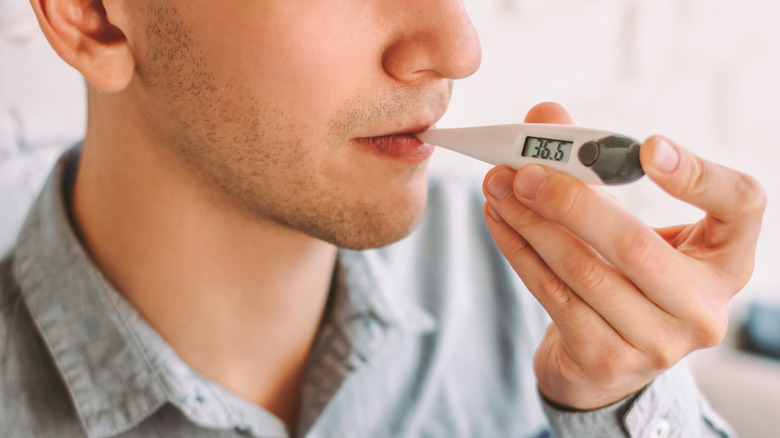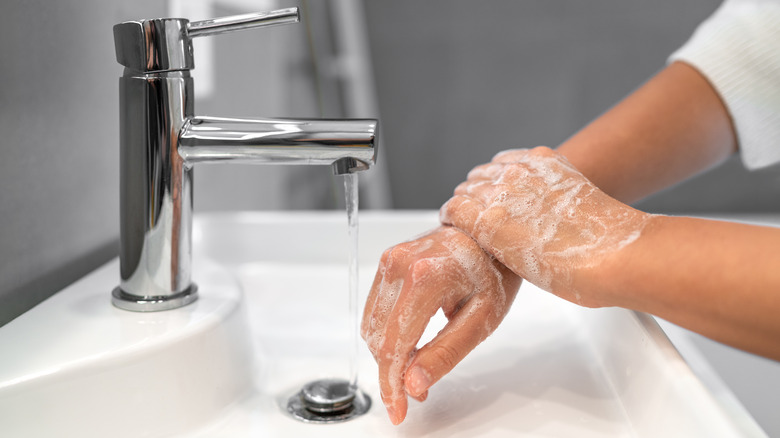How Long Is Monkeypox Contagious For?
Monkeypox is a viral infection akin to smallpox but less severe and far less deadly (per WebMD). Researchers first discovered monkeypox in lab monkeys in 1958, and Yale Medicine dates the first human case to 1970. Until recently, the human version of the virus occurred mostly in Central and West African countries. In 2022, public health officials reported outbreaks outside the African continent. Still, Yale Medicine says the virus is rare and spreads through close contact with infected individuals.
The first symptoms usually appear as flu-like complaints, including headache, fever, and non-specific general discomfort. Swollen lymph nodes may occur before a rash breaks out and are a notable symptom that distinguishes monkeypox symptoms from those of chickenpox, which can appear similar.
In previous outbreaks of monkeypox, lesions began in the mouth and spread to the skin of the torso, face, and head before spreading to the rest of the body. But with the current outbreak, lesions may be confined to the genital and anal regions. As of August 2022, most cases reported this year have occurred in men who have had intimate contact with infected men.
Monkeypox can remain contagious for up to four weeks
National Public Radio (NPR) explains three stages of the monkeypox virus. The first stage is the incubation period. During the incubation period, no symptoms are apparent, and an infected person may not know they are infected. Health officials do not know if the infection is contagious at this point.
During the second stage, flu-like symptoms occur in some people. The virus could possibly be contagious in this stage, but experts aren't sure yet. The telltale rash appears at the beginning of the third and final stage. Infected individuals are definitely contagious as soon as a rash appears. The Centers for Disease Control and Prevention (CDC) says that if a person with monkeypox develops flu-like symptoms, rash onset typically occurs within one to four days.
People infected with monkeypox can spread the virus from the appearance of the first lesion until all symptoms have resolved and all sores are healed over with new skin, typically two to four weeks from onset. CDC guidelines state that infected persons should avoid close contact, wear a well-fitting mask, and not share drinking containers or utensils with others.
If you are infected or live with an infected person, wash your hands frequently with soap and warm water, avoid touching areas where the rash persists, and disinfect commonly used surfaces. The infection is less readily spread through bedding or clothing, but it can happen, and individuals should avoid sharing clothing or bedding used by an infected person (via WebMD).


